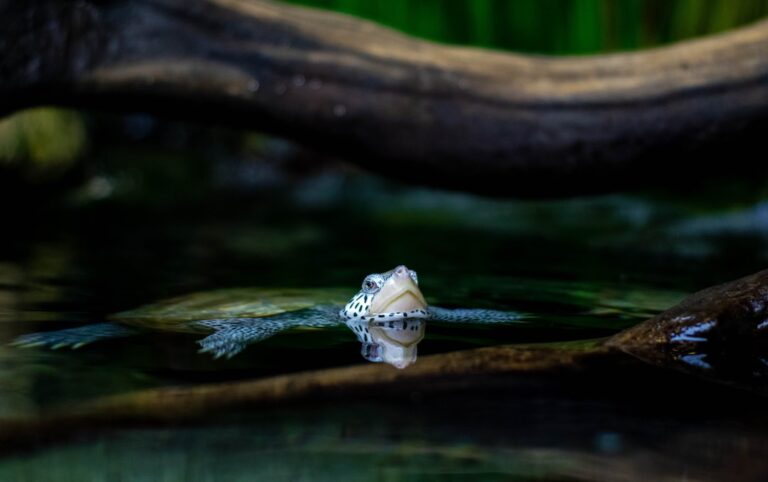Why Do Turtles Keep Their Mouths Open?
Turtles are fascinating creatures with unique behaviors that often leave us with more questions than answers. One of the most intriguing mysteries surrounding turtles is their open mouth behavior. Many turtle owners have observed their pets with their mouths wide open, seemingly for no apparent reason. This behavior has puzzled scientists and turtle enthusiasts alike, leading to a quest for understanding the underlying reasons behind it.
Table of Contents
Understanding the Anatomy of a Turtle’s Mouth
To comprehend the open mouth behavior of turtles, it is essential to understand the anatomy of their mouths. A turtle’s mouth is equipped with a beak-like structure made of keratin, similar to that of a bird. This beak is used for biting and tearing food. Unlike other reptiles, turtles lack teeth, which makes their beak an essential tool for feeding.
Additionally, a turtle’s mouth is unique in that it is connected to its respiratory system. The roof of the mouth contains a bony structure called the vomerine bone, which helps support the nasal passages. This connection between the mouth and respiratory system plays a crucial role in a turtle’s breathing and temperature regulation.
The Role of Temperature Regulation in Turtle Mouth Behavior
Turtles are ectothermic creatures, meaning they rely on external sources to regulate their body temperature. Basking in the sun is a common behavior observed in turtles, and it serves as a means of thermoregulation. When a turtle basks, it exposes its body to the sun’s rays, which helps raise its internal temperature.
The open mouth behavior observed in turtles can be attributed to temperature regulation. By opening their mouths, turtles increase the surface area exposed to the air, allowing for more efficient heat exchange. This behavior helps them cool down when they are too hot or warm up when they are too cold.
Turtles and Oxygen: The Connection between Open Mouths and Breathing
In addition to temperature regulation, a turtle’s open mouth behavior is also linked to its breathing. Turtles are unique in that they have a specialized respiratory system that allows them to breathe while submerged in water. When a turtle opens its mouth, it increases the flow of water over its gills, facilitating oxygen exchange.
Turtles have a highly efficient respiratory system that enables them to extract oxygen from both air and water. By opening their mouths, turtles can increase the amount of oxygen available to them, especially when they are in an environment with low oxygen levels. This behavior ensures that turtles can survive in various aquatic habitats.
The Impact of Stress on Turtle Mouth Behavior
Stress can have a significant impact on a turtle’s behavior, including its mouth activity. When turtles are stressed, they may exhibit abnormal behaviors such as excessive mouth opening or closing. This can be seen as a defensive mechanism or a sign of discomfort.
Signs of stress in turtles include hiding, refusing to eat, and excessive pacing. To reduce stress in turtles, it is important to provide them with a suitable environment that meets their needs. This includes providing proper lighting, temperature, and hiding spots. Additionally, handling turtles gently and minimizing disturbances can help reduce stress levels.
The Influence of Water Quality on Turtle Mouth Behavior
Water quality plays a crucial role in a turtle’s health and behavior, including its mouth activity. Poor water quality can lead to various health issues for turtles, such as respiratory infections and shell rot. These conditions can cause discomfort and affect a turtle’s ability to breathe properly.
When turtles are exposed to dirty or contaminated water, they may exhibit open mouth behavior as a way to increase oxygen intake. By opening their mouths wider, turtles try to compensate for the lack of oxygen in the water. Therefore, maintaining clean and properly filtered water is essential for ensuring the well-being of turtles and reducing the need for excessive mouth opening.
The Significance of Basking in Turtle Mouth Behavior
Basking is a vital behavior for turtles, and it has a direct impact on their mouth activity. When turtles bask, they expose themselves to the sun’s rays, which helps raise their body temperature. This behavior is crucial for maintaining their overall health and well-being.
Basking also plays a role in a turtle’s mouth behavior. By exposing their bodies to the sun, turtles can warm up their internal organs, including their respiratory system. This allows for more efficient oxygen exchange and reduces the need for excessive mouth opening.
The Connection between Feeding and Open Mouths in Turtles
A turtle’s mouth is not only used for breathing but also for feeding. Turtles are omnivorous creatures, meaning they eat both plants and animals. Their beak-like mouths are designed for biting and tearing food.
When turtles are feeding, they may exhibit open mouth behavior as they bite and tear their food. This behavior allows them to grasp and manipulate their prey more effectively. Therefore, open mouths during feeding are a natural and necessary behavior for turtles.
The Impact of Age and Gender on Turtle Mouth Behavior
Age and gender can also influence a turtle’s mouth behavior. Younger turtles may exhibit more frequent open mouth behavior as they are still developing their thermoregulatory abilities. As turtles mature, they become more efficient at regulating their body temperature, resulting in less frequent open mouth behavior.
Gender can also play a role in a turtle’s mouth activity. Male turtles may exhibit more open mouth behavior during courtship or territorial disputes as a display of dominance. Female turtles, on the other hand, may exhibit open mouth behavior during nesting or when protecting their eggs.
Turtle Care: Tips for Encouraging Healthy Mouth Behavior
To ensure healthy mouth behavior in turtles, it is important to provide them with proper care and a suitable environment. Here are some tips for maintaining a healthy environment for turtles:
1. Provide a spacious and clean enclosure with proper filtration to maintain water quality.
2. Offer a basking area with a heat lamp to allow turtles to regulate their body temperature.
3. Provide a varied and balanced diet that includes both plant matter and protein sources.
4. Minimize stress by handling turtles gently and providing hiding spots in their enclosure.
5. Regularly monitor water quality parameters such as temperature, pH, and ammonia levels.
By following these tips, turtle owners can encourage healthy mouth behavior in their pets and ensure their overall well-being.
Understanding turtle mouth behavior is essential for providing proper care and ensuring the well-being of these fascinating creatures. The open mouth behavior observed in turtles is linked to temperature regulation, breathing, stress, water quality, basking, feeding, age, and gender.
By providing a suitable environment and meeting their specific needs, turtle owners can encourage healthy mouth behavior in their pets. This includes maintaining clean water, providing proper lighting and temperature, offering a varied diet, and minimizing stress.
Turtles are unique creatures with complex behaviors that continue to captivate us. By delving into the mysteries of their open mouth behavior, we can gain a deeper appreciation for these remarkable reptiles and provide them with the care they deserve.
If you’re curious about the fascinating behaviors of reptiles, you might also be interested in an article titled “Why Do Iguanas Bob Their Heads?” This article explores the peculiar head-bobbing behavior commonly observed in iguanas and delves into the possible reasons behind it. To learn more about this intriguing reptilian behavior, click here.







